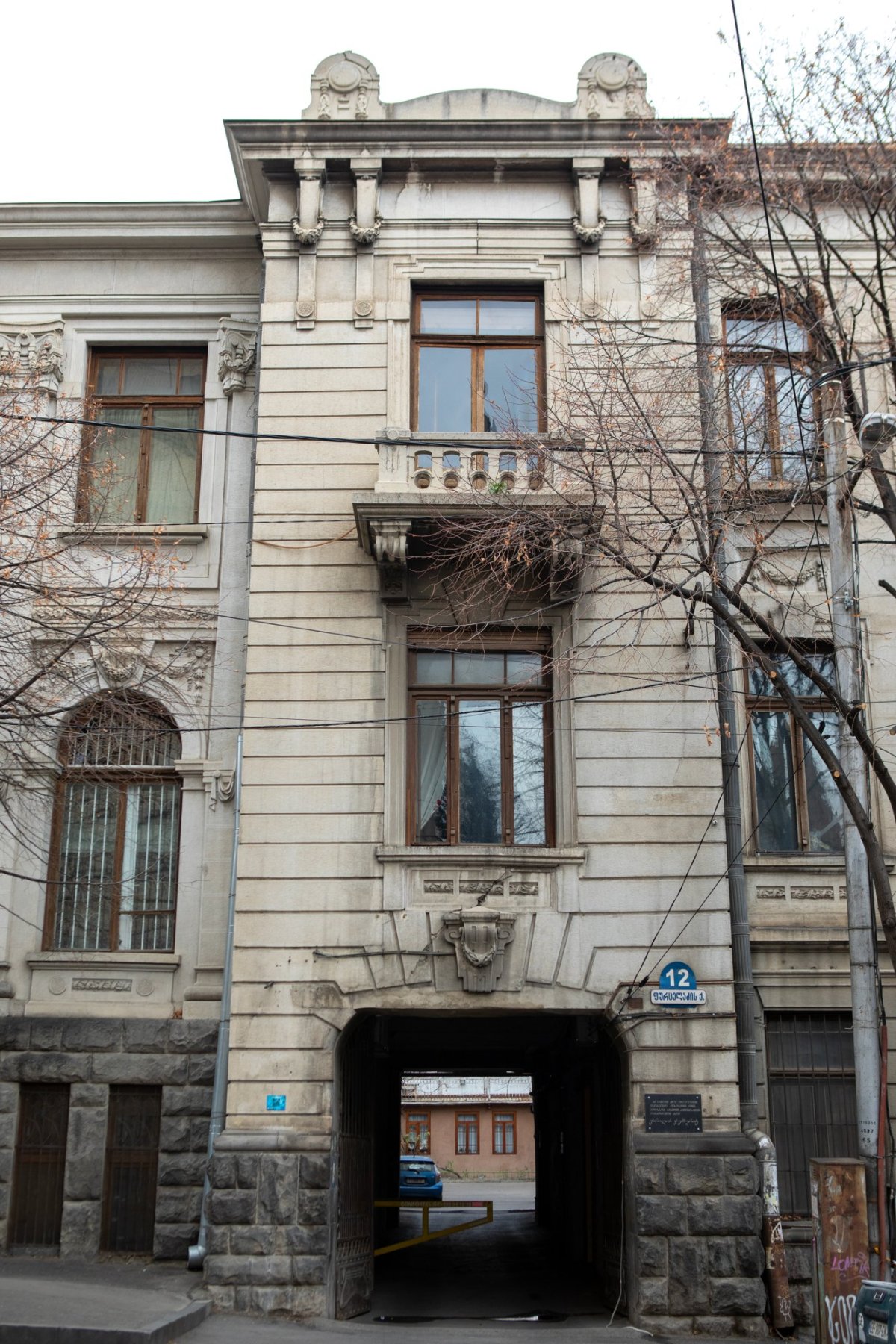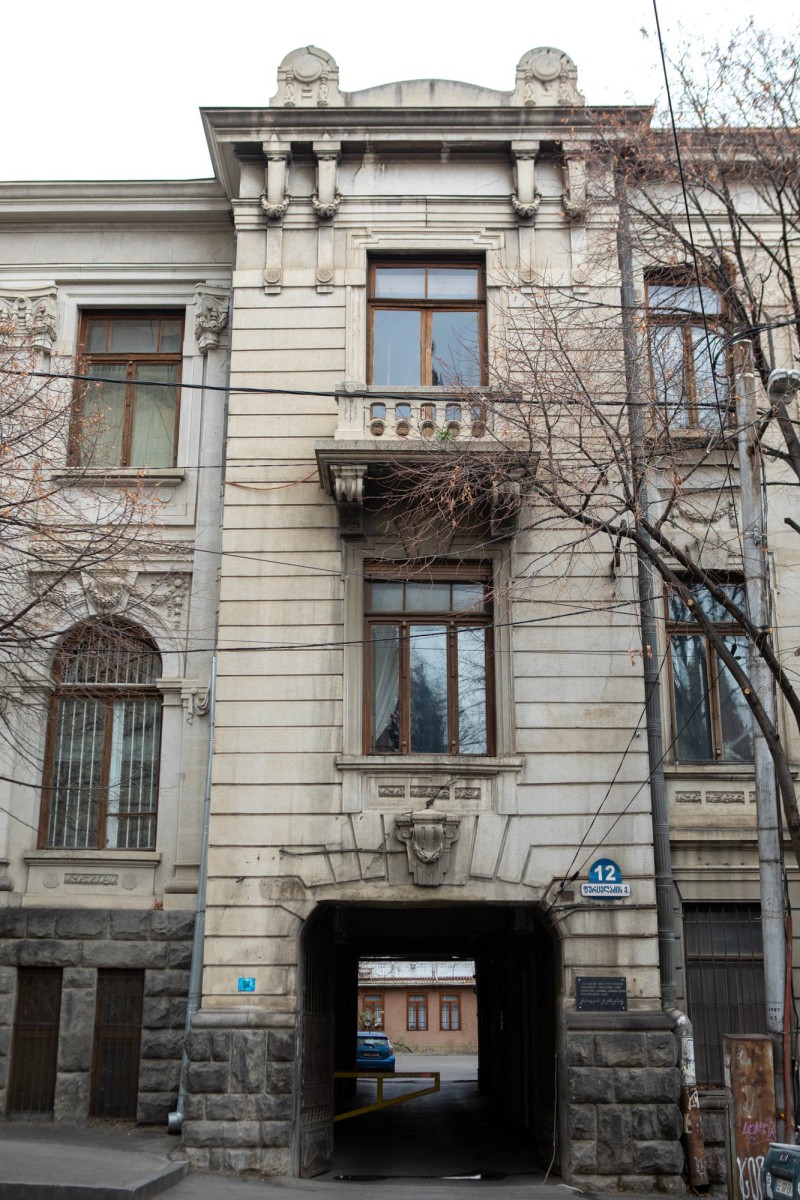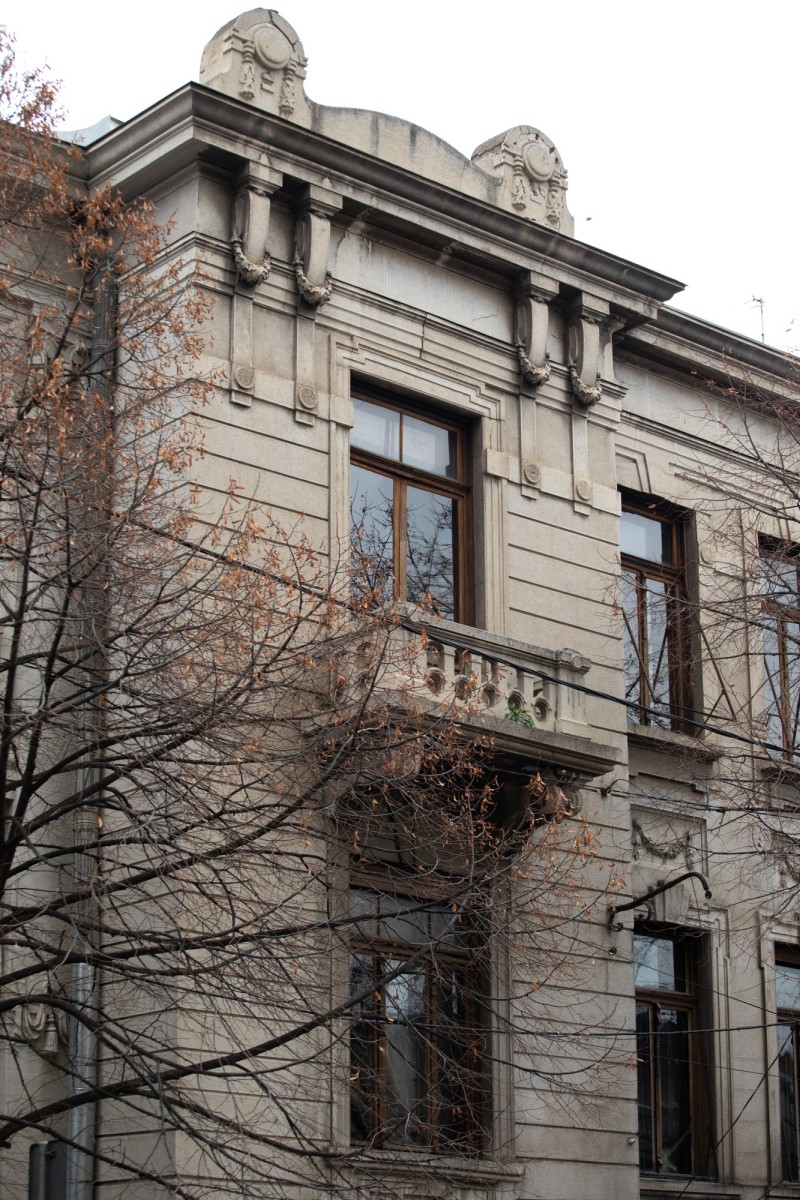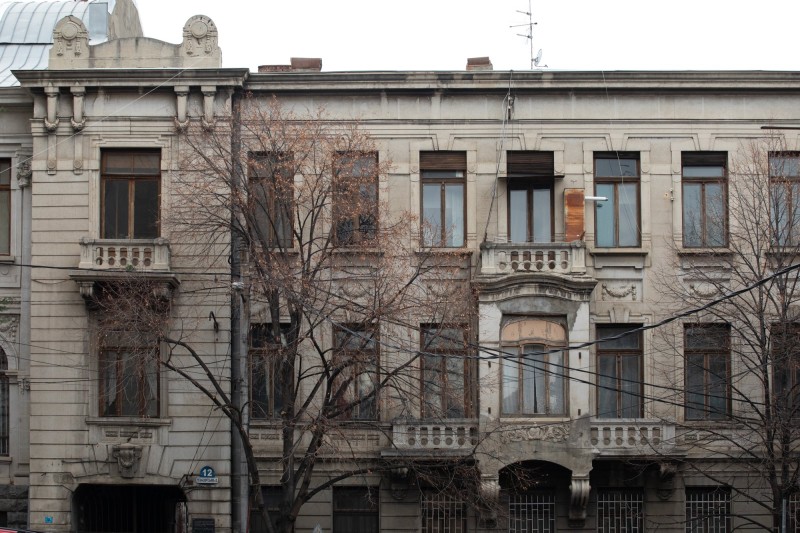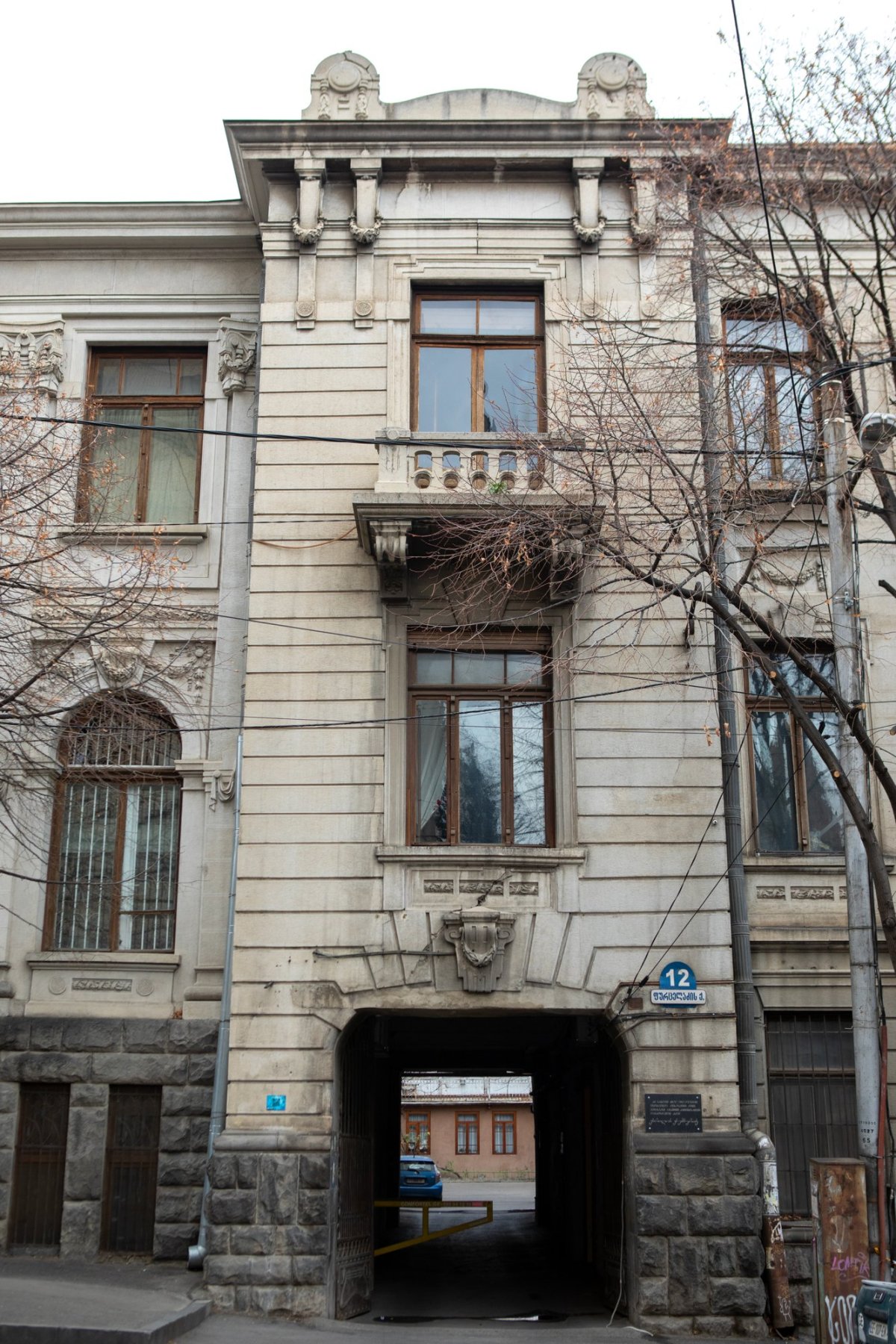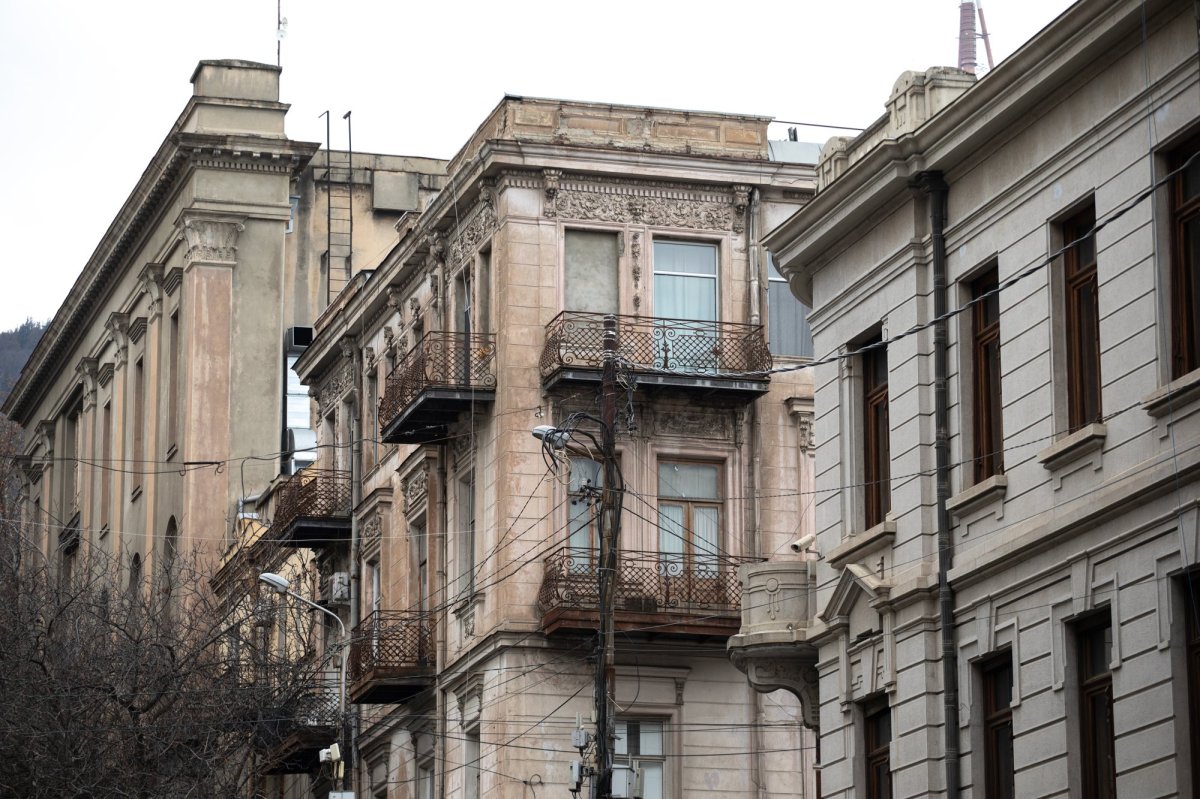Information in details
12, Purtseladze St. Located at 7, L. Gudiashvili (former Ketskhoveli) St., the office of the former State Bank office was built in 1910 according to project of Mikhail Ohanjanov and R. Golenishchev. It is one of the best public buildings built in Tbilisi's modern "Art Nouveau" style. It is significant that the building next to 12, Purtseladze St. was a working and living building for bank officials. Initially, it was built as an office of the State Bank, and later the 3rd building of the National Library was located in it. The adjacent building on the side of Baron Street had the function of a residential house for the bank's employees. Both buildings were connected by a fairly large internal yard so that employees and service personnel could enter the bank through the yard. The functional planning solution of both buildings was organically connected to each other. The living spaces, which were facing the street, went directly into the bank building through a corridor on the second and third floors. Such a customized, adapted and comfortable system was created for the bank managers - the bank director and his deputies lived with their families on all three floors. The rear wings of the building, which opened to the inner courtyard, were directly intended for the bank's service personnel. On the second floor of the building lived the director of the bank, Iason Lortkipanidze, from whose apartment there was an exit to the office. The building is distinguished not only by its courtyard and street facades, but also by its interior. The furniture, which was made by special order, has survived to this day. The building is an important dominant in its artistic-architectural form, which was built in the popular at that time modern "Art Nouveau" style. The decoration of the portal on the edge of the facade - the figurative capitals of the giant slatted columns, the sculptural decor of the wavy border, the wavy pediment with the high-relief image of the eagle and other separate elements give the building a luxurious expressiveness and plasticity. The interior also bears the signs of modern "Art Nouveau", flowing forms of architectural elements, stained glass roofing and other elements. We should also say about the architect of the building - Mikhail Ohanjanov worked for a long time as a district architect in the city self-government. His projects first appeared in 1898. From this time until the years of the First World War, he built many residential houses, treasury and public institution buildings in Tbilisi. He actively introduced the modern "Art Nouveau" style facades, which were composed of projects developed in other cities.


 თბილისი, Anton Furtseladze Street N12
თბილისი, Anton Furtseladze Street N12
 41.696939, 44.7984178
41.696939, 44.7984178

